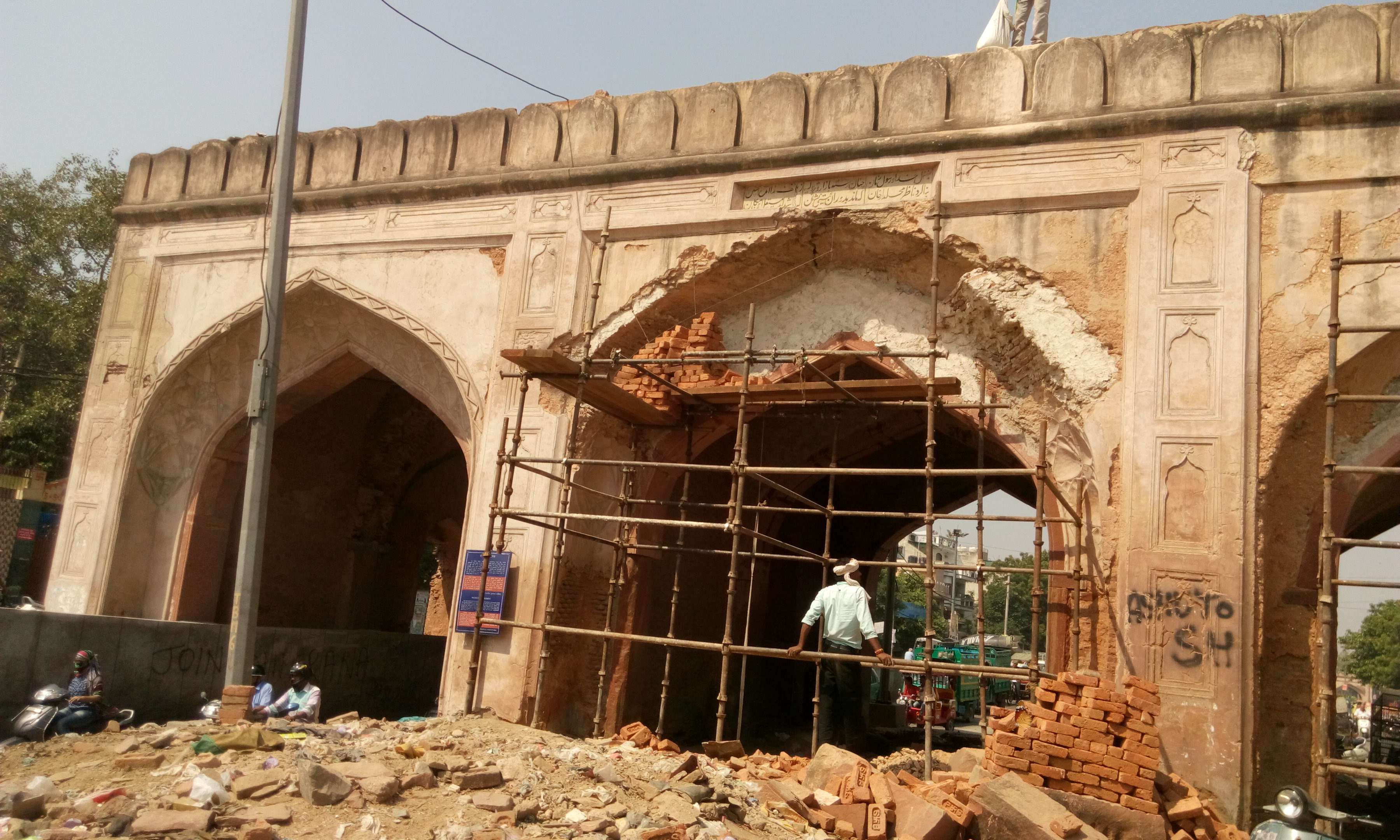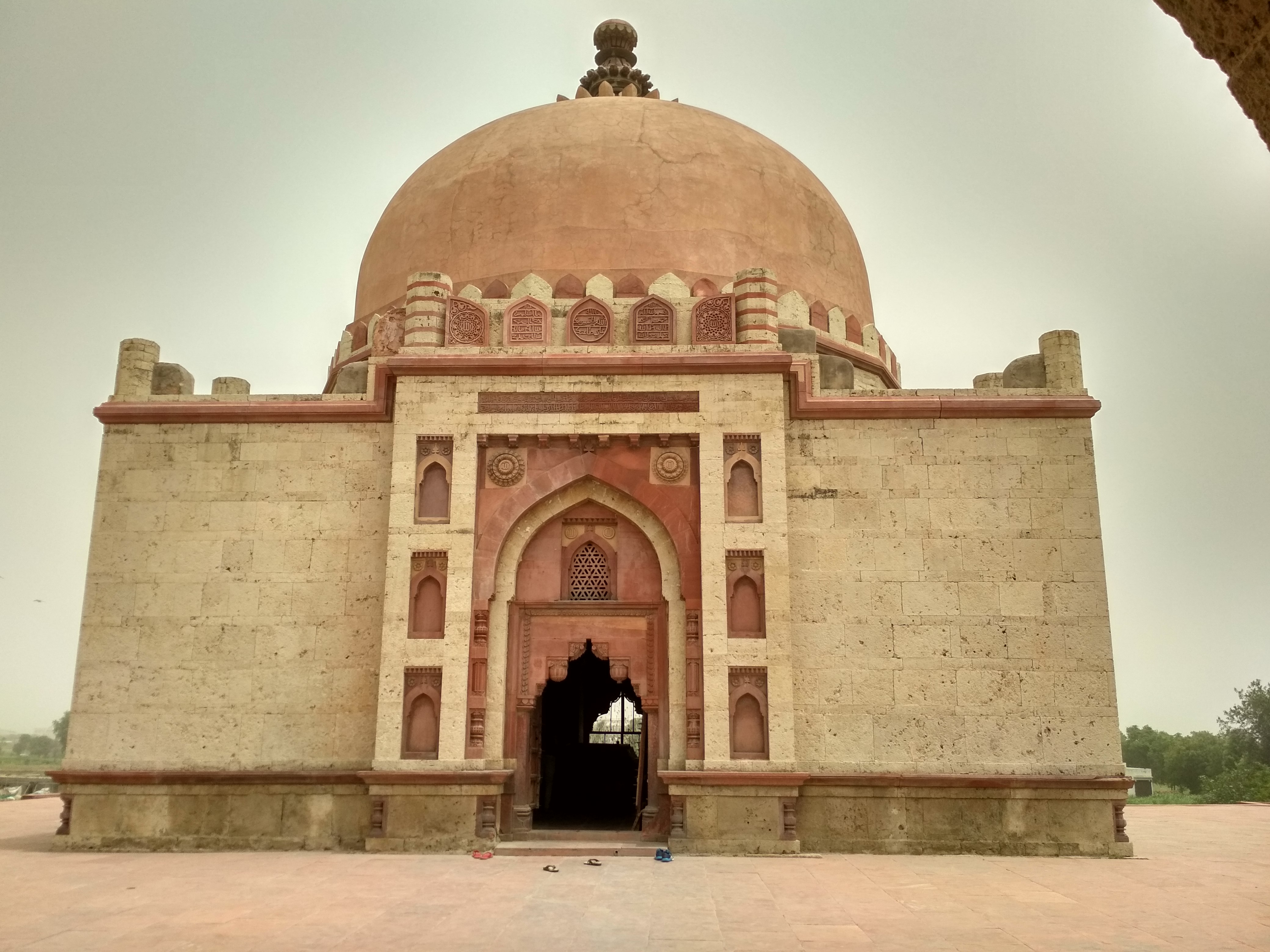The Tripolia Gateway in Narnaul stands as a profound testament to the architectural and cultural richness of the Mughal era, representing a pivotal moment in Haryana's historical landscape. Nestled within the complex of Shah Quli Khan's tomb, this remarkable three-storey structure embodies the sophisticated design principles characteristic of late 16th-century Mughal architecture.
Constructed around 1588-89 AD, the gateway emerges as more than just a physical entrance, but as a symbolic threshold connecting the past with the present. Its rubble walls, meticulously covered with thick plaster and adorned with intricate designs, reflect the aesthetic sensibilities of a period marked by remarkable architectural innovation. The slightly sloping walls and decorative elements speak to the nuanced craftsmanship of Mughal builders who saw architecture as an art form transcending mere functional requirements.
Shah Quli Khan, a notable Mughal governor during Akbar's reign, commissioned this gateway as part of a larger architectural vision that would immortalize his legacy. His strategic positioning in the Mewat region and his patronage of architectural projects underscore the complex political and cultural dynamics of the time. The gateway serves not just as a physical structure but as a narrative embodiment of the social hierarchies and artistic expressions prevalent during the Mughal period.
Narnaul's historical significance extends far beyond this single monument. The city's roots trace back to the early Vedic civilization, with legends suggesting its naming by Raja Noonkaran after his wife, Naralon. This rich tapestry of historical narratives positions Narnaul as more than a mere geographical location, but as a living repository of cultural memories and transformative historical moments.
The architectural context of the Tripolia Gateway cannot be divorced from its broader cultural ecosystem. While the gateway itself is a marvel of design, it exists within a larger narrative of Mughal architectural patronage. The use of red sandstone and intricate plastered decorations reflects the aesthetic principles that defined imperial architectural commissions during this period, demonstrating a sophisticated understanding of spatial design and ornamental complexity.
Beyond its architectural significance, the gateway represents a crucial node in understanding the socio-political landscape of medieval Haryana. The Khanzada dynasty's rule, following the disintegration of the Delhi Sultanate, created a unique cultural milieu where architectural projects like the Tripolia Gateway became statements of power, prestige, and cultural sophistication. Each stone, each design element tells a story of negotiation, aspiration, and cultural transformation.
The monument's preservation and continued significance highlight the ongoing dialogue between historical heritage and contemporary cultural understanding. As a site of national importance, the Tripolia Gateway serves not just as a tourist destination but as a critical pedagogical resource, offering insights into the complex architectural and cultural narratives of the Mughal period. Its existence invites viewers to contemplate the layered histories embedded within its walls, bridging centuries of human experience and artistic expression.






